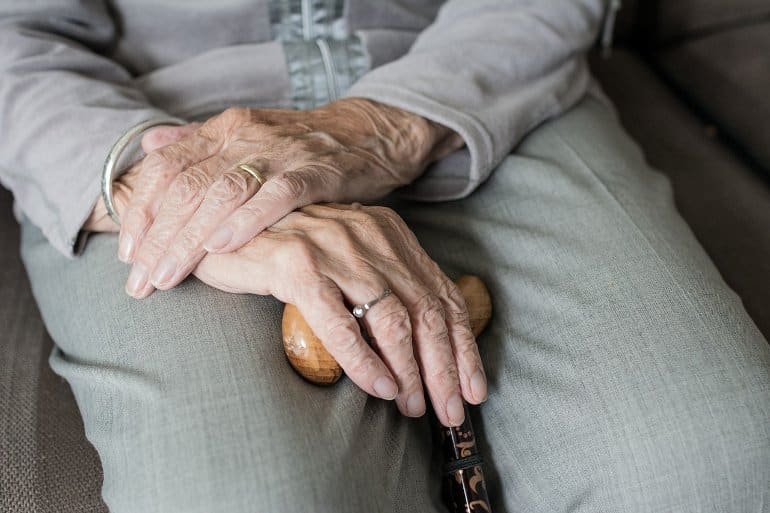Summary: Almost 50% of older adults now die with a recorded diagnosis of dementia, up 36% from two decades ago.
Source: University of Michigan
Nearly half of all older adults now die with a diagnosis of dementia listed on their medical record, up 36% from two decades ago, a new study shows.
But that sharp rise may have more to do with better public awareness, more detailed medical records and Medicare billing practices than an actual rise in the condition, the researchers say.
Even so, they note, this offers a chance for more older adults to talk in advance with their families and health care providers about the kind of care they want at the end of life if they do develop Alzheimer’s disease or another form of cognitive decline.
The study, published in JAMA Health Forum by a University of Michigan team, uses data from 3.5 million people over the age of 67 who died between 2004 and 2017. It focuses on the bills their providers submitted to the traditional Medicare system in the last two years of the patients’ lives.
In 2004, about 35% of these end-of-life billing claims contained at least one mention of dementia, but by 2017 it had risen to more than 47%. Even when the researchers narrowed it down to the patients who had at least two medical claims mentioning dementia, 39% of the patients qualified, up from 25% in 2004.
The biggest jump in the percentage of people dying with a dementia diagnosis happened around the time Medicare allowed hospitals, hospices and doctors’ offices to list more diagnoses on their requests for payment.

But around this same time, the National Plan to Address Alzheimer’s Disease also went into effect, with a focus on public awareness, quality of care and more support for patients and their caregivers.
The end-of-life care that patients with dementia received changed somewhat overtime, including a drop in the percentage who died in a regular hospital bed or a ICU bed, or who had a feeding tube in their last six months. The percentage who received hospice services rose dramatically, from 36% to nearly 63%, though the authors note this is in line with a national trend toward more hospice care by the late 2010s.
“This shows we have far to go in addressing end-of-life care preferences proactively with those who are recently diagnosed, and their families,” said Julie Bynum, M.D., Ph.D., senior author of the study and a professor of geriatric medicine at Michigan Medicine.
“Where once the concern may have been underdiagnosis, now we can focus on how we use dementia diagnosis rates in everything from national budget planning to adjusting how Medicare reimburses Medicare Advantage plans.”
About this dementia research news
Author: Press Office
Source: University of Michigan
Contact: Press Office – University of Michigan
Image: The image is in the public domain
Original Research: Open access.
“Trends in US Medicare Decedents’ Diagnosis of Dementia From 2004 to 2017” by Matthew A. Davis et al. JAMA Health Forum
Abstract
Trends in US Medicare Decedents’ Diagnosis of Dementia From 2004 to 2017
Importance
Alzheimer’s disease and related dementias (ADRD) have received considerable attention among clinicians, researchers, and policy makers in recent years. Despite increased awareness, few studies have documented temporal changes in the documentation of ADRD diagnoses despite its new importance for risk adjustment for health plans in Medicare.
Objective
To assess trends in frequency of ADRD diagnosis in the last 2 years of life from 2004 to 2017, as well as any associated changes in billing practices, characteristics of the population with diagnosed ADRD, and intensity of end-of-life care.
Design, Setting, and Participants
This is a serial cross-sectional study of older adult decedents (67 years or older) from 2004 to 2017 using a 20% sample of fee-for-service Medicare decedents. An ADRD diagnosis within the last 2 years of life was identified using diagnosis codes from inpatient, professional service, home health, or hospice claims, requiring the standard claims algorithm that required at least 1 claim and a more stringent algorithm that required at least 2 claims. Trends in ADRD diagnosis among decedents were used to lessen influence of new diagnostic technologies for early stage disease. Demographic characteristics, selected comorbidities, place of death, and health service use at the end-of-life were also examined. Data were analyzed from July 9, 2020, to May 3, 2021.
Exposures
Calendar year 2004 to 2017.
Main Outcome and Measure
An ADRD diagnosis within 2 years of death.
Results
Among the included 3 515 329 Medicare fee-for-service decedents, when adjusted for age and sex, the percentage of older decedents with an ADRD diagnosis increased from 34.7% in 2004 to 47.2% in 2017. The trend was attenuated (25.2% to 39.2%) using a stringent ADRD definition. There was an inflection in the curve from 2011 to 2013, the time at which additional diagnoses were added to Medicare claims and the National Alzheimer Care Act was enacted. The ADRD diagnosis frequency increased considerably in inpatient (49.0% to 67.3%), hospice (12.2% to 42.0%), and home health (10.1% to 28.7%) claims. However, individual characteristics, number of visits, and hospitalizations were similar across the study period, and the intensity of end-of-life care declined on most measures.
Conclusions and Relevance
In this cross-sectional study, nearly half of older Medicare decedents had a diagnosis of ADRD at the time of death. From 2004 to 2017, the percentage of older adult decedents who received an ADRD diagnosis increased substantially prior to announcement of the addition of ADRD to Medicare risk adjustment strategies.







